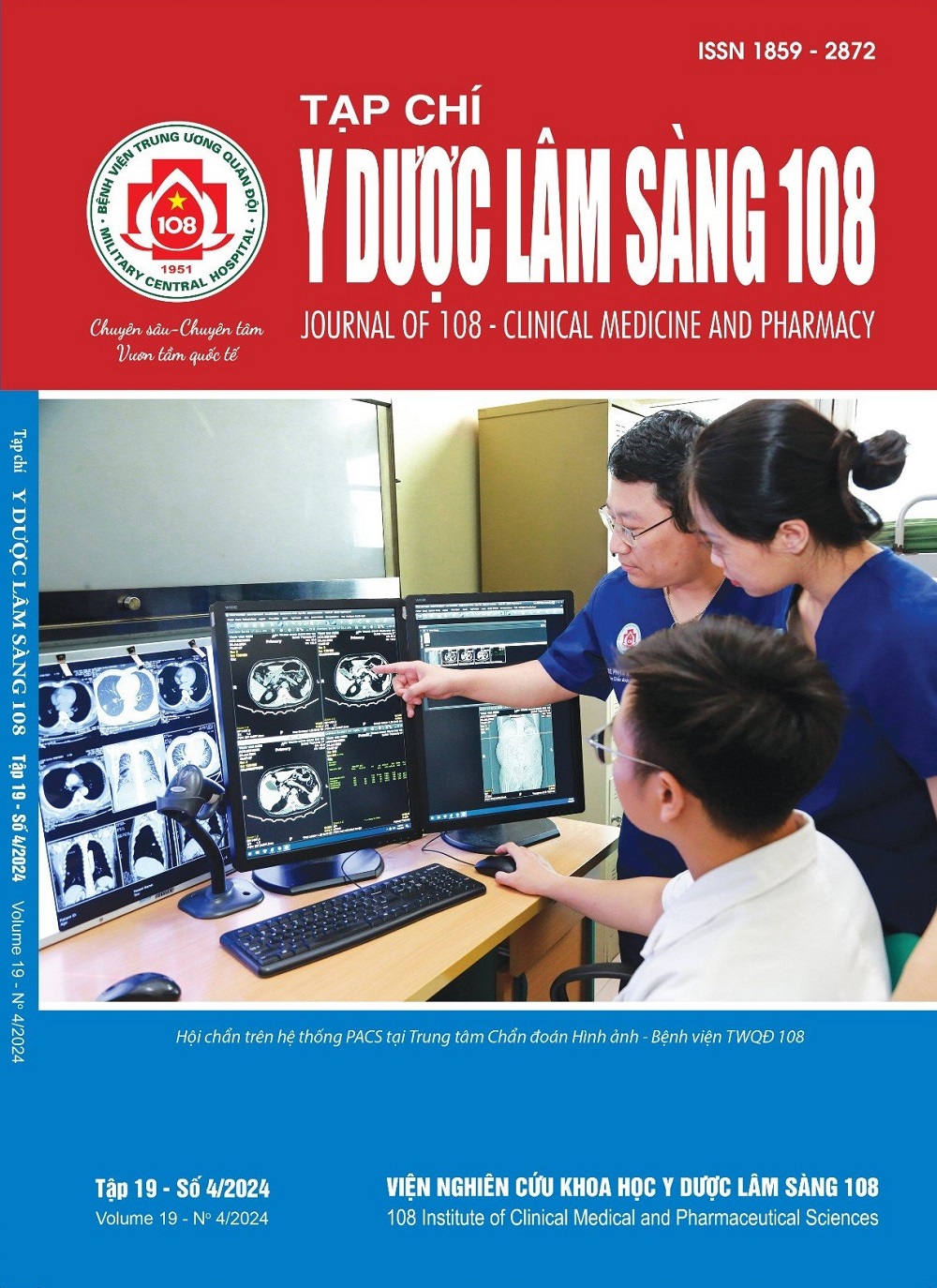Investigation of variability of serum ferritin levels in patients with septic shock
Main Article Content
Keywords
Abstract
Objective: To investigate variability of serum ferritin levels in patients with septic shock. Subject and method: 120 patients diagnosed with septic shock treated at the Intensive Care Center and Infectious Resuscitation Department of 108 Military Central Hospital from April 2023 to October 2023, were followed up for changes in serum ferritin levels at the time of diagnosis of septic shock (T0); day 1 (T1), day 3 (T3) and day 7 (T7) compared to day T0. Result: Serum ferritin levels increased early at T0 which was 912.2 (699.4-1455.8) ng/ml and highest at time point T1 923.8 (696.2-1441.8) ng/ml and gradually decreased at time T3, T7. Serum ferritin levels at time T0, T1, T3 showed a difference between the two groups of survivors and non-survivors (p<0.05). Conclusion: Serum ferritin increased levels at the time of diagnosis of septic shock, highest on the first day, then gradually decreased. Elevated ferritin levels were statistically significant in the group of non-survivors due to septic shock.
Article Details
References
2. Knovich MA, Storey JA, Coffman LG et al (2009) Ferritin for the Clinician. Blood Rev 23(3): 95–104.
3. Kernan KF and Carcillo JA (2017) Hyperferritinemia and inflammation. Int Immunol 29(9): 401–409.
4. Singer M, Deutschman CS, Seymour CW et al (2016) The Third International Consensus Definitions for Sepsis and Septic Shock (Sepsis-3). JAMA 315(8): 801-810.
5. Vincent JL, Moreno R, Takala J et al (1996) The SOFA (Sepsis-related Organ Failure Assessment) score to describe organ dysfunction/failure. On behalf of the Working Group on Sepsis-Related Problems of the European Society of Intensive Care Medicine. Intensive Care Med 22(7): 707-710.
6. Williams V, Menon N, Bhatia P et al (2020) Serum ferritin predicts neither organ dysfunction nor mortality in pediatric sepsis due to tropical infections. Front Pediatr 8: 607673.
7. Missano Florido M, Assunção M, Mazza B et al (2012) Evaluation of iron, transferrin and ferritin serum levels in patients with severe sepsis and septic shock. Critical Care 16(1): 424.
8. Birgegård G, Hällgren R, Killander A et al (1978) Serum ferritin during infection. A longitudinal study. Scand J Haematol 21(4): 333-340.
9. Fang YP, Zhang HJ, Guo Z et al (2022) Effect of serum ferritin on the prognosis of patients with sepsis: data from the mimic-iv database. Emergency Medicine International 2022: 2104755.
10. Liu F and Liu Z (2023) Association between ferritin to albumin ratio and 28-day mortality in patients with sepsis: A retrospective cohort study. European Journal of Medical Research 28(1): 414.
11. He L, Guo C, Su Y et al (2023) The relationship between serum ferritin level and clinical outcomes in sepsis based on a large public database. Sci Rep 13(1): 8677.
12. Rusu D, Blaj M, Ristescu I et al (2020) Outcome predictive value of serum ferritin in ICU patients with long ICU stay. Medicina (Kaunas) 57(1): 1.
 ISSN: 1859 - 2872
ISSN: 1859 - 2872
